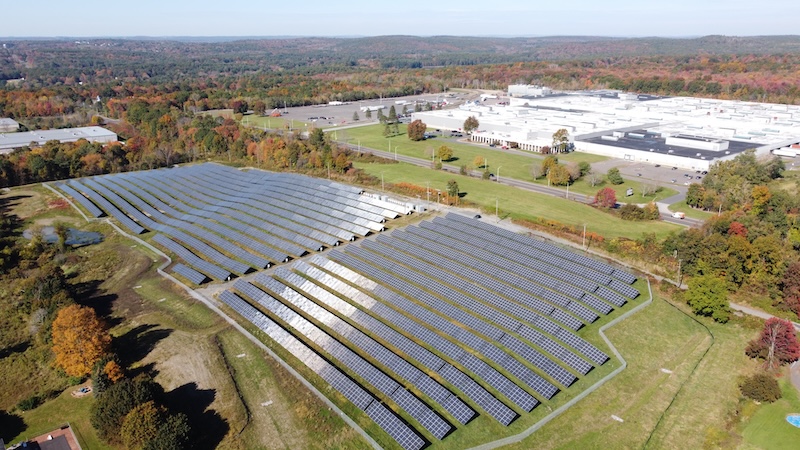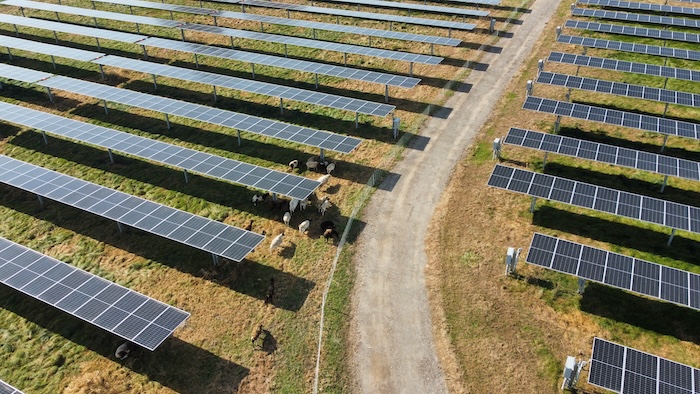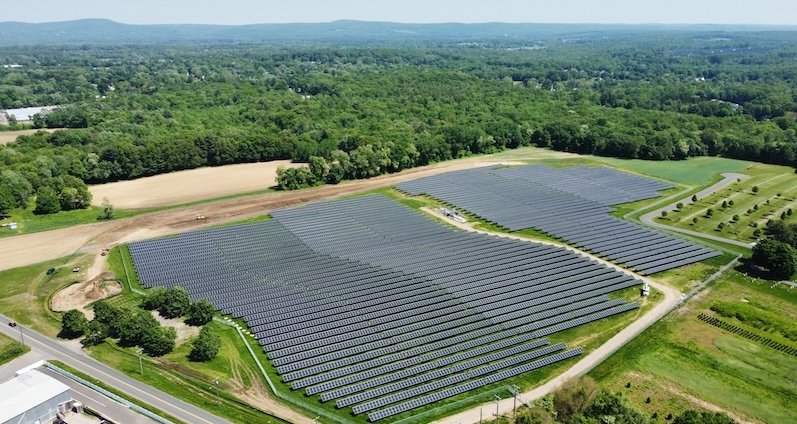Powering Our Future Together: Community solar is essential
Clean energy should be accessible to everyone. While utility scale solar installations and individual rooftop systems are vital pieces of the puzzle, community solar offers a uniquely powerful way to democratize the benefits of renewable power. It allows households, renters, small businesses, and others who might not have suitable rooftops to participate in clean energy generation. Instead of installing panels on their own properties, participants subscribe to a share of a larger, off-site solar array and receive credits on their electric bills for the power produced.
The recent growth of community solar in the United States is a testament to its potential. In 2024 alone, the nation added a record 1.7 GW of community solar capacity, a 35 percent increase from the previous year. This brought the total installed capacity to 8.6 GW by the end of 2024, enough clean energy to power over one million subscribers across 44 states and Washington, D.C.

One state working to advance community solar is Connecticut, which saw its largest community solar project completed in 2024. Developed under Connecticut’s Shared Clean Energy Facility (SCEF) program, the installation will generate an estimated $214,150 in annual electric savings for the next 20 years. This project represents an important achievement not just in energy production, but also in promoting energy equity for low- and moderate-income (LMI) households. In 2025 alone, Connecticut will benefit from the launch or completion of more than a dozen new community solar projects.
Community solar isn’t just about impressive numbers; it means tangible benefits for communities. These policies expand access, opening the door to solar energy for those often left out. Community solar also offers substantial cost savings, with subscribers receiving reductions in their monthly electricity bills without the upfront investment and maintenance costs associated with individual solar installations. Importantly, community solar also delivers significant environmental benefits. By increasing the amount of clean energy on the grid, community solar is helping Connecticut reach its ambitious climate goals: a 45 percent reduction in greenhouse gas emissions by 2030 and 80 percent by 2050. Community solar can be a powerful tool for achieving these targets, transforming how clean energy is produced not only in Connecticut, but across the nation.

Leading community solar states such as New York, Maine, and Illinois have demonstrated the rapid growth achievable with supportive policies. Their successes provide valuable lessons for those states looking to expand their own community solar programs. However, despite this encouraging growth, the path to widespread community solar adoption faces significant hurdles:
- Interconnection delays and grid constraints: Connecting community solar projects to the existing power grid can be a lengthy and expensive process. Long queues for interconnection approval and the potential need for costly grid upgrades can delay or even halt promising projects. Unfortunately, this remains a significant challenge in many states.
- Policy inconsistencies: The landscape of community solar policy varies dramatically state to state. Some have established robust programs with clear guidelines and incentives, while many others lack comprehensive frameworks or impose limitations on project size and subscriber eligibility. For example, Connecticut’s community solar program is set to expire in 2027, leaving just two years to award new projects. Without a successor program, the momentum achieved in expanding equitable access to clean energy will stall.
- Equity gaps: While efforts to increase LMI participation are underway, these households still represent a relatively small portion of overall community solar subscribers. Low levels of awareness and difficult enrollment processes can limit access for those who could benefit most from the cost savings
To truly unlock the full potential of community solar and ensure a more equitable and sustainable energy future, policymakers, regulators, and energy leaders across the United States must take decisive action:
- Streamline interconnection processes: Support grid modernization efforts and implement transparent, efficient, and standardized interconnection procedures. Exploring solutions like group studies and cost-sharing models, as successfully implemented in states like Massachusetts, can help alleviate the burden of individual project upgrade costs.
- Expand and standardize state programs: Encourage more states to adopt comprehensive community solar programs with clear and consistent rules, fair compensation mechanisms for generated electricity, and specific targets for LMI participation.
- Enhance LMI access through incentives and outreach: Provide dedicated incentives for projects that prioritize LMI subscribers. Reduce unnecessary barriers and invest in community outreach initiatives to raise awareness and facilitate enrollment.
- Prioritize community solar in federal clean energy planning: Ensure community solar is recognized as a critical component of national renewable energy goals and included in federal funding opportunities, including tax credits and financing mechanisms that can make projects more viable for developers and affordable for consumers.
- Foster collaboration and education: Promote greater collaboration among industry stakeholders, policymakers, and communities to raise awareness about the benefits of community solar and help streamline project development.

The solar industry already understands that the impact of community solar is immediate and profound: lower energy bills for subscribers, reduced greenhouse gas emissions, and a boost to the local economy through job creation. By addressing the current challenges with thoughtful policies and collaboration, we can accelerate the growth of community solar and ensure its positive impacts are felt in every community across the nation. We must all be committed to working with policymakers and communities to make this vision a reality.
Will Herchel is Co-Founder and Chief Executive Officer at Verogy. From electricity generation to renewable energy credits, Verogy understands and manages every aspect of the solar development, financing, and maintenance processes.
Verogy | www.verogy.com
Author: Will Herchel
Volume: 2025 July/August










.png?r=3626)

